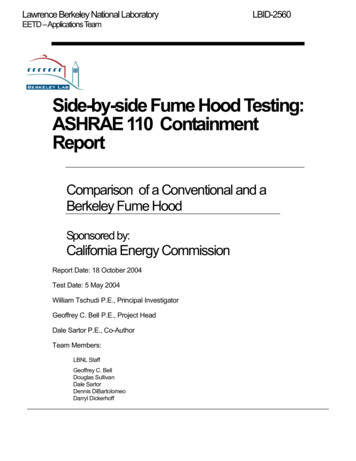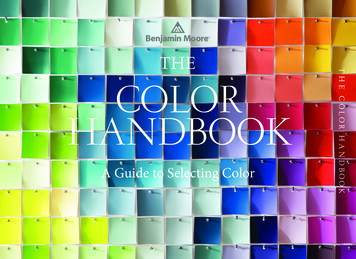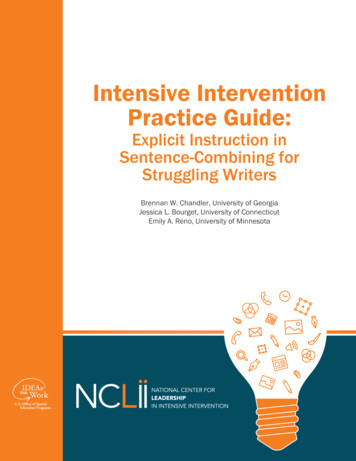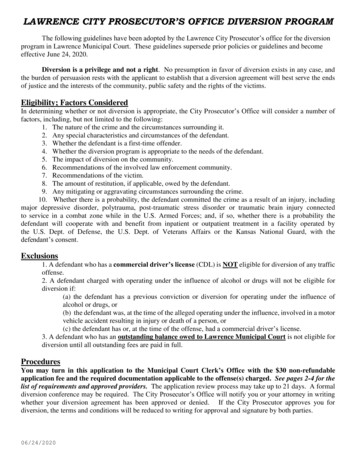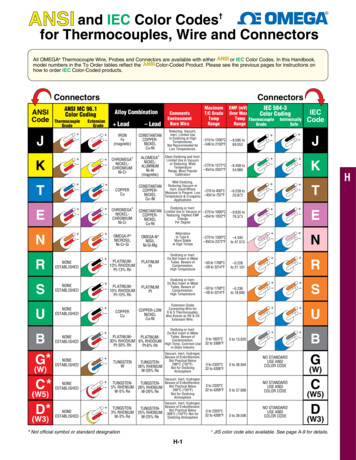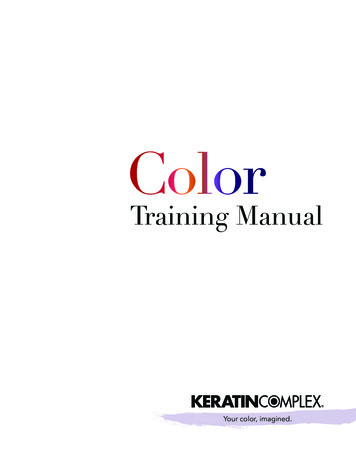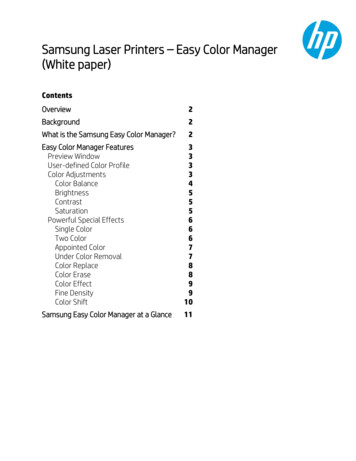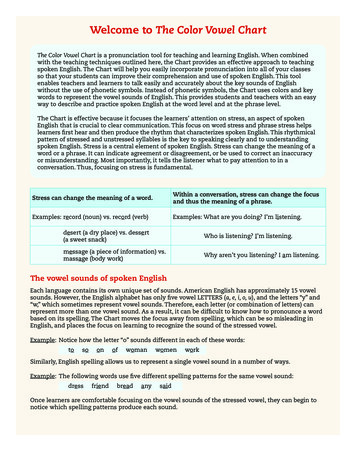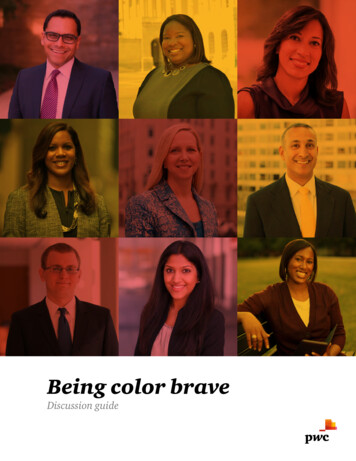
Transcription
Being color braveDiscussion guide
Table of contentsThis discussion guide can be used in large and small group meetings and eventsto generate dialogue and self-awareness on ways to become more color brave.3Gettingstarted7Share yourexperiences5 minutes15 minutes4Connectionpoints15 minutes5Selfreflection8Build yourcuturalawareness9Takeaction10 minutesBeing color brave2 // For Internal Use Only5 minutes10 minutes
5Getting StartedWhat does it mean to be color brave?Being color brave means having candid conversations about race that can help us betterunderstand each other’s perspectives and experiences so that we can make better decisionsand secure better prospects for future generations.Think about itLearning about others’ experiences and perspectives is at the heart of our ability to buildauthentic relationships. It helps increase our cultural dexterity so we can better work acrossdifferences and support each other’s success. Acknowledging and discussing race is a firststep to developing and sustaining an inclusive culture.“We have to be willing to have proactive conversationsabout race with honesty and understanding andcourage – not because it’s the right thing to do, butbecause it’s the smart thing to do.”- Mellody Hobson, President of Ariel InvestmentsBe self-aware - ask yourself Who is in my circle and who isn’t? What are my potential blindspots? What can I do to build trust with others who are different from me? What can I do to broaden my perspective?Be curious. Ask others about their experiences. Demonstrate genuine interest in learning aboutother races and cultures and connecting with people as individuals. Expand your circles to expandyour perspective.Be bold. See things through a different cultural lens by trying something new. Attend a festival orcultural event. Participate in a diversity activity. Small actions can have a big impact. Continuallychallenge yourself to step outside of your comfort zone.Be forgiving. We all make mistakes, so assume positive intent. Forgive someone who doesn’t “get itright.” Help them understand your point of view. Look at difficult conversations as a way to grow andbuild stronger relationships.Being color brave3 // For Internal Use Onlymins.
15mins.Connection pointsWatch the Color Brave video as a group. Afterwards, take a few minutesto individually reflect on the questions below. Be prepared to share youranswers with the group or in trios.What one or two messages from the video had the most personal resonancefor you? Why? Use the space below to write down your thoughts.Being color brave4 // For Internal Use Only
5mins.Self-reflectionUse the questions below to gain clarity on how color brave you currently are. Be honest withyour responses. This is for your reference only.Be curiousHow often do I.1: Almost always5: Almost never Take note of who’s in my network?12345 Work to better understand my potential blindspots?12345 Seek diversity when assembling a team or planning a meeting?12345 Share my own experiences to build a relationship?12345 Ask questions about someone else’s experiences?12345 Seek opportunities to learn about other races and cultures?12345Be boldHow comfortable am I with.1: Very comfortable5: Very uncomfortable Attending an event that attracts people who are different from me?12345 Networking/socializing with someone from a different cultural background?12345 Intentionally being in the minority at a meeting/event to gain perspective?12345 Encouraging everyone to share his/her perspective during a discussion?12345 Listening to someone’s perspective even if it doesn’t match my own?12345 Speaking up if I observe a lack of diversity?12345continuedBeing color brave5 // For Internal Use Only
Self-reflectionBe forgivingHow often do I.1: Almost always5: Almost never Assume someone has positive intentions?12345 Forgive someone who has made a mistake?12345 Hold my ideas “lightly” to allow me to change my mind?12345 Use mistakes as an opportunity to start a dialogue?12345 Take a chance by opening myself up?12345 Reflect upon times I may have made an assumption basedup on someone’s appearance?12345Being color brave6 // For Internal Use Only
15mins.Share your experiencesRegardless of where you are on the color brave spectrum, there is alwaysroom to grow and develop. On your own, take a few moments to answer thequestions using the space below. Then, form a trio where you can take turnsdiscussing your responses.1. Reflect on a recent situation where you’ve been the “only one” (whetherrace, gender, nationality, or similar). How did you feel? How did thesituation impact your behavior? What did you learn from it?2. W hat are the personal and professional benefits of being more color brave?3. W hat are the perceived barriers to being more color brave?Being color brave7 // For Internal Use Only
1015mins.Build your cultural awarenessIt is important to recognize that the groups we identify with influence howwe see the world. One way to widen your lens is to tap into resources thatcan help you build your cultural awareness.In small groups, identify resources that can help you build your culturalawareness. Use the table below to capture ideas. Be prepared to share yourthoughts with the group.External Organizations(community and professional)Internal Groups & EventsMedia OutletsPersonal ConnectionsOtherBeing color brave8 // For Internal Use Only
10mins.Take actionBased on your discussions, identify key action items that you will committo working on as part of your goal of becoming more color brave. Use itemsfrom this list or document additional goals in the space below. Share yourcommitment with your group and others to help you stay accountable.Be Curious. I will xamine my network to see who’s in it and who’s notEWork to better understand my potential blindspotsAsk questions to understand the experiences and background of othersParticipate in diversity events to learn about other races and culturesBe Bold. I will eek out diversity when assembling a team or assigning an opportunityS Challenge the status quo if groups are not represented Solicit diverse points of view so all voices are heard Invite someone from a different background to an eventBe Forgiving. I will Assume positive intent when others interact with meForgive someone who has made a mistakePut myself in someone else’s shoes rather than passing judgment Challenge myself to engage in conversations about race to advance my developmentOther actions I will take to become more color brave include:I will stay accountable for my action commitments by:Being color brave9 // For Internal Use Only
To learn more, be-color-bravewww.pwc.com 2015 PwC. All Rights Reserved. 89281-2016JC
2 // For Internal Use Only Being color brave Table of contents This discussion guide can be used in large and small group meetings and events to generate dialogue and self-awareness on ways to become more color brave.
